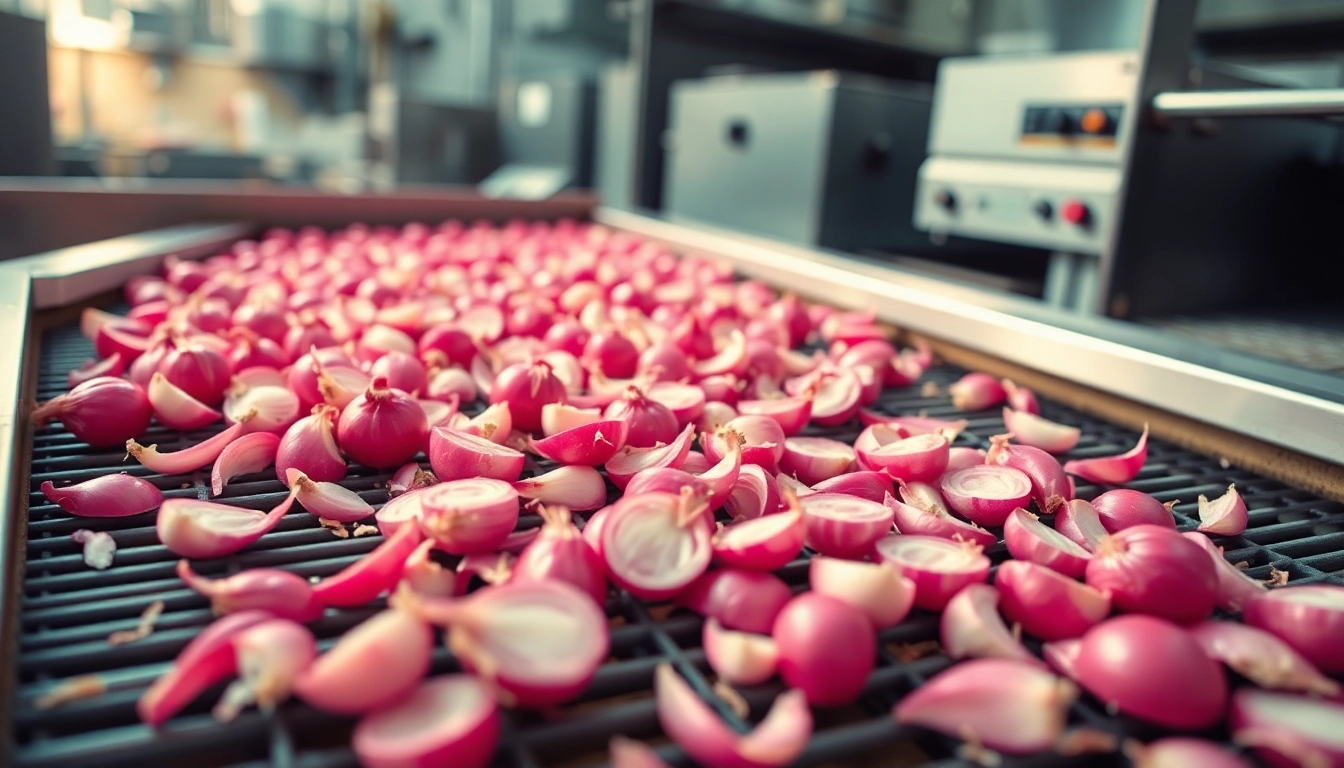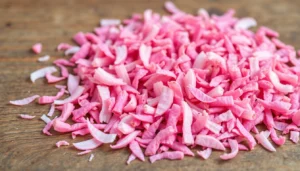Understanding Dehydrated Pink Onion and Its Market Potential
Dehydrated pink onion has emerged as a vital ingredient in the global spice and processed food industry, prized for its vibrant color, distinctive flavor, and versatile application in various culinary contexts. Unlike regular onions, pink onions possess a unique hue and sweet taste, making their dehydrated form a popular choice among food manufacturers, exporters, and culinary enthusiasts. For those interested in exploring or expanding their product portfolio, Dehydrated Pink Onion offers a promising opportunity to meet the rising demand for natural, flavorful, and long shelf-life ingredients.
This article delves into the market dynamics, processing methodologies, benefits, and export strategies associated with dehydrated pink onion, providing a comprehensive guide for manufacturers, exporters, and traders seeking to capitalize on this lucrative segment.
Processing Techniques and Quality Standards for Dehydrated Pink Onion
Selection and Preparation of Pink Onions for Dehydration
The journey to high-quality dehydrated pink onion begins with sourcing premium raw materials. Selecting fresh, mature pink onions free from blemishes, pests, or disease is critical. These onions should have uniform size and moisture content to ensure consistent dehydration results. Proper cleaning—using mechanical washers and gentle scrubbing—prevents dirt and contaminants from compromising the final product.
Pre-processing steps include peeling, slicing, or chopping depending on the desired final form. The slices should be uniform in thickness to facilitate even dehydration and prevent spoilage or mold growth. Adequate pre-treatment, such as blanching, may be employed to preserve color and inhibit enzymatic browning, enhancing product stability.
Step-by-Step Dehydration Methods for Optimal Preservation
The dehydration process involves removing moisture while preserving flavor, aroma, and nutritional value. Common methods include:
- Sun Drying: Traditional method suitable for small-scale production, though weather-dependent and longer in duration.
- Mechanical Dehydration: Using industrial dehydrators or hot air ovens ensures controlled temperature and humidity, leading to uniform drying and better quality control.
- Freeze Drying: Advanced method with high preservation of flavors and nutrients; however, it is costlier and less common for large-scale production.
In most commercial settings, hot air drying at temperatures around 55-65°C for several hours is optimal, balancing moisture removal with the preservation of color and flavor. Continuous movement of slices on conveyor belts or trays ensures uniform dehydration and prevents over-drying or burning.
Certifications and Quality Assurance for Export-Ready Product
Meeting international quality standards is imperative for successful export of dehydrated pink onion. Leading certifications include ISO 22000 for food safety management, HACCP protocols for hazard analysis, and organic or other relevant certifications depending on target markets. Regular quality checks involve moisture content analysis, microbiological testing, and sensory evaluation to ensure product safety and stability.
Packaging also plays a crucial role; vacuum-sealed, nitrogen-flushed pouches or retort pouches with moisture and oxygen barrier properties help preserve freshness, color, and flavor during storage and transit.
Benefits of Incorporating Dehydrated Pink Onion in Food Products
Enhanced Flavor, Shelf Life, and Versatility in Cooking
Dehydrated pink onion adds a distinctive color and flavor profile to a wide range of dishes, from spice blends to snack foods. Its concentrated flavor enhances soups, curries, sauces, and instant mixes, offering a more robust taste experience. The dehydration process significantly extends shelf life—often up to two years—making it ideal for long-term storage and global distribution.
Furthermore, powdered or flaked dehydrated pink onion can be easily incorporated into seasonings, snack products, and ready-to-cook meals, catering to modern consumers seeking convenience without compromising on quality.
Health Benefits and Nutritional Value
Pink onions are rich in antioxidants, vitamins (such as vitamin C and B-complex), and minerals (like potassium and manganese). When dehydrated carefully, they retain much of their nutritional content, offering health benefits such as anti-inflammatory properties and immune support. As a natural flavor enhancer, dehydrated pink onion allows food producers to reduce reliance on artificial additives and preservatives.
Cost-Effectiveness and Supply Chain Advantages
The dehydration process reduces weight and volume, resulting in lower transportation costs and storage needs. This economic benefit is significant for exporters operating across long-distance markets. Additionally, dehydration minimizes waste, as onions with minor blemishes or surplus harvests can be processed without quality deterioration, optimizing supply chain yields and profitability.
Strategies for Exporting Dehydrated Pink Onion Successfully
Identifying Key International Markets and Trade Opportunities
Markets in North America, Europe, Middle East, and Asian countries exhibit high demand for dehydrated spices and vegetables. Countries with a thriving food processing industry, such as the United States, Germany, Japan, and Gulf nations, are prime targets. Conducting market research to understand consumer preferences, tariff structures, and import regulations is essential for tailored entry strategies.
Packaging, Labeling, and Compliance for Global Standards
Adhering to international packaging standards ensures product integrity. Labels must include ingredient details, nutritional facts, country of origin, and certification marks. Compliance with regulations such as FDA (USA), EFSA (Europe), and FSSAI (India) is vital. Using eco-friendly and tamper-evident packaging can also enhance consumer trust and brand reputation.
Building Reliable Partnerships with Distributors and Buyers
Establishing long-term relationships with overseas distributors, agents, and retail chains is key to sustainable export success. Participating in international trade fairs like Biofach or Gulfood provides opportunities to showcase products, gather market insights, and negotiate deals. Ensuring consistent product quality, timely delivery, and competitive pricing fosters credibility and customer satisfaction.
Future Outlook and Innovations in Dehydrated Pink Onion Production
Emerging Technologies and Sustainable Practices
Advancements such as microwave-assisted dehydration, ultrasound-assisted drying, and solar-powered dehydration units are improving efficiency and sustainability. Integrating renewable energy sources reduces carbon footprint, aligning with global trends toward eco-conscious manufacturing. Automation in sorting, slicing, and packaging enhances productivity and ensures uniform quality.
Expanding Product Range with Dehydrated Pink Onion Derivatives
Innovative products like flavored onion powders, organic versions, or value-added blends (e.g., aromatic spice mixes) open new market segments. Additionally, developing ready-to-use forms such as instant onion soups or seasoning capsules expands consumer options, particularly in the convenience food sector.
Market Expansion Strategies for Long-Term Growth
Diversifying into neighboring markets, leveraging e-commerce platforms, and obtaining international certifications are effective ways to sustain growth. Collaborative R&D efforts, taste adaptation, and branding focused on health benefits can differentiate products in competitive markets.


